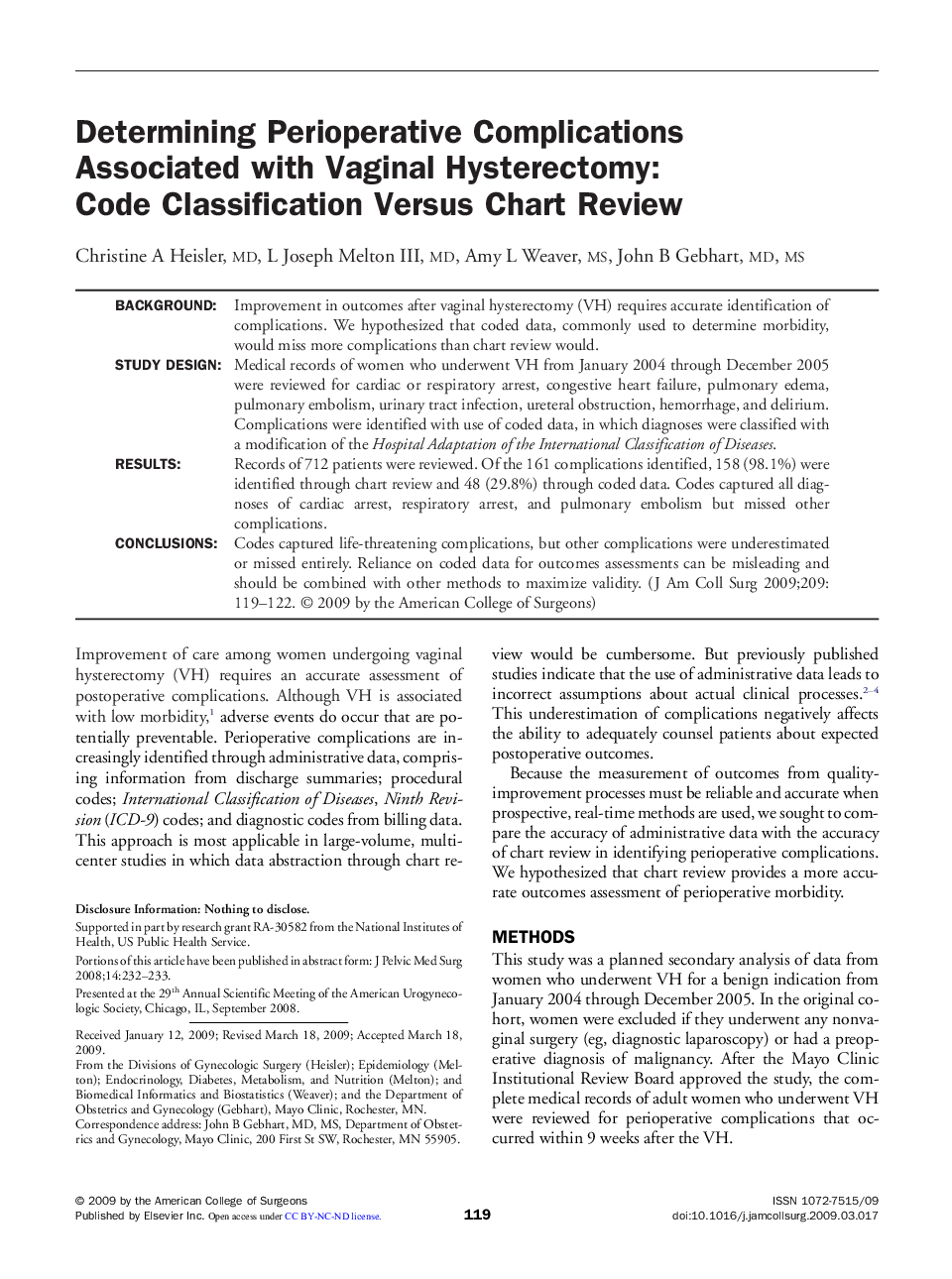| Article ID | Journal | Published Year | Pages | File Type |
|---|---|---|---|---|
| 6253173 | Journal of the American College of Surgeons | 2009 | 4 Pages |
BackgroundImprovement in outcomes after vaginal hysterectomy (VH) requires accurate identification of complications. We hypothesized that coded data, commonly used to determine morbidity, would miss more complications than chart review would.Study DesignMedical records of women who underwent VH from January 2004 through December 2005 were reviewed for cardiac or respiratory arrest, congestive heart failure, pulmonary edema, pulmonary embolism, urinary tract infection, ureteral obstruction, hemorrhage, and delirium. Complications were identified with use of coded data, in which diagnoses were classified with a modification of the Hospital Adaptation of the International Classification of Diseases.ResultsRecords of 712 patients were reviewed. Of the 161 complications identified, 158 (98.1%) were identified through chart review and 48 (29.8%) through coded data. Codes captured all diagnoses of cardiac arrest, respiratory arrest, and pulmonary embolism but missed other complications.ConclusionsCodes captured life-threatening complications, but other complications were underestimated or missed entirely. Reliance on coded data for outcomes assessments can be misleading and should be combined with other methods to maximize validity.
